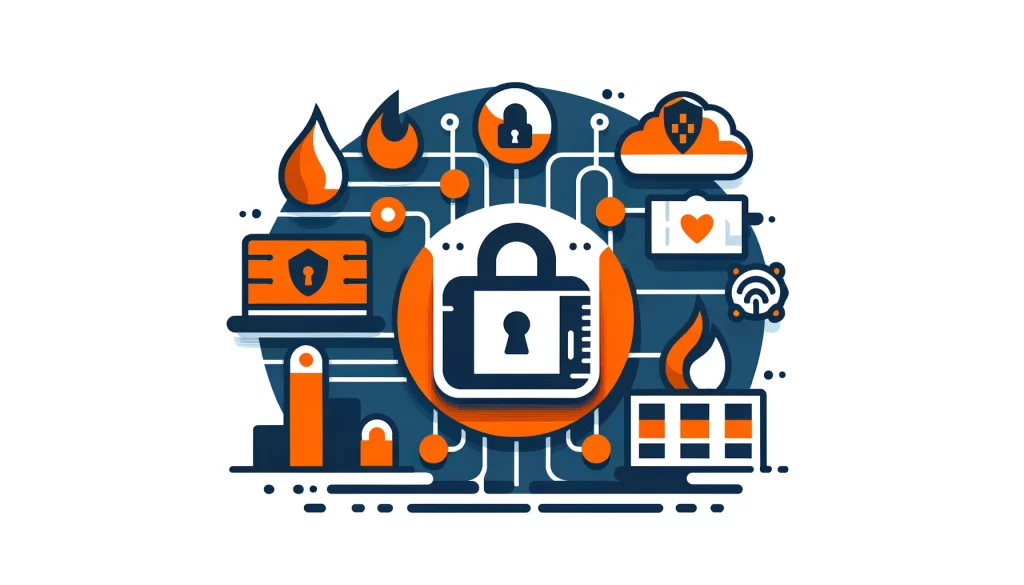
Data Security Policy

Businesses must create a strong data security policy. This policy will protect the sensitive information they collect, store, and manage.
This policy helps employees and stakeholders know how to keep information safe from unauthorized access, breaches, and misuse.
This article will discuss the key components of effective policies. This will also provide advice on creating and implementing them successfully.
Deep Look into Data Security Policy
These are not just documents; it is a critical component of a company’s overall strategy.
It explains the rules and procedures that everyone in the organization must follow to keep sensitive data safe and secure.
By having a well-defined security policy in place, organizations can:
- Protect sensitive information from unauthorized access and breaches
- Comply with relevant industry regulations and standards
- Foster a culture of security awareness among employees
- Minimize the risk of financial damage caused by security incidents
Example: Consider a healthcare organization that handles patient information.
They enforce strict policies to follow rules like HIPAA and protect patients’ personal and medical information from unauthorized access. Strict policies are in place to ensure compliance with HIPAA regulations. These policies are to safeguard patients’ sensitive information. Unauthorized individuals can’t access patients’ personal and medical data.
Key Components of a Data Security Policy
When crafting a security policy, it is essential to cover all the critical aspects of protection. Here are the key components to include:
Scope and Objectives
Clearly define the purpose and scope of the security policy. Specify the types of data covered, the individuals and departments it applies to, and the objectives it aims to achieve.
Data Classification
Establish a data classification system that categorizes resources based on its sensitivity and criticality. This helps prioritize securing measures and ensures that the most sensitive info receives the highest level of protection.
Access Control
Define the rules and procedures for granting, modifying, and revoking access to sensitive data. Implement the principle of least privilege, ensuring that individuals only have access to the info they need to perform their job duties.
Data Handling and Storage
Provide guidelines on how to handle, store, and transmit data securely. This includes rules for encrypting data. It also involves safe places to store the data. Additionally, there are steps for securely getting rid of unnecessary data.
Incident Response and Reporting
Establish a clear incident response plan that outlines the steps to be taken in the event of a breach or loss.
Define the roles and responsibilities of individuals involved in incident response and specify the reporting requirements.
Example: A financial institution can implement a data security policy that mandates the use of strong encryption for all sensitive financial information, both at rest and in transit.
Additionally, the policy can require multi-factor authentication for accessing critical systems and regular security audits to identify and address vulnerabilities.
Implementing and Enforcing the Data Security Policy
Creating a comprehensive policy is only half the battle. To ensure its effectiveness, company must properly implement and enforce the policy. Consider the following best practices:
Executive Buy-In
Obtain the support and commitment of senior management and executives. Their endorsement will help drive the adoption and enforcement of the security policy across the organization.
Employee Training and Awareness
Conduct regular training sessions to educate employees about the data security policy and their responsibilities in upholding it. Foster a culture of security awareness through ongoing communication and reinforcement of best practices.
Regular Review and Update
Keep the policies up to date with the evolving threat landscape and changing business requirements. Conduct periodic reviews and make necessary revisions to ensure the policy remains relevant and effective.
Monitoring and Auditing
Implement monitoring and auditing mechanisms to track compliance with the security policy. Regularly assess the effectiveness of security controls and identify areas for improvement.
Example: A technology company can provide yearly security awareness training for all employees. This training will cover topics like how to handle resources, best practices for passwords, and ways to prevent phishing attacks.
Additionally, they can implement loss prevention (DLP) solutions to monitor and prevent unauthorized exfiltration.
The Role of Technology in Enforcing Data Security Policy
A well-crafted policy is important for protecting resources, but technology is crucial for enforcing and automating policy compliance. Here are some key technological aspects to consider:
Access Control Systems
Implement robust access control systems that enforce the principles of least privilege and need-to-know. These systems should allow for granular control over who can access specific resources.
Encryption Technologies
Utilize encryption technologies to protect sensitive details both at rest and in transit. Encryption ensures that even if hackers intercept or steal information, it remains unreadable to unauthorized individuals.
Data Loss Prevention (DLP) Solutions
Deploy DLP solutions to monitor and prevent unauthorized exfiltration. These tools can detect and block attempts to send sensitive information outside the company’s network.
Security Information and Event Management (SIEM)
Implement SIEM solutions to collect, analyze, and correlate security events from various sources. SIEM helps identify potential security incidents and enables prompt incident response.
A healthcare organization can require the use of role-based access control (RBAC) to limit access to patient records. This policy ensures that only authorized staff members can view the records.
Healthcare providers can use encryption solutions to protect patient information on mobile devices. They can also utilize Data Loss Prevention (DLP) to prevent the sharing of sensitive information through email or other channels.
Conclusion
Organizations can protect their sensitive information, maintain customer trust, and comply with regulations by creating a thorough policy.
However, creating a policy is just the first step. It is equally important to implement and enforce the policy consistently across the organization, leveraging a combination of training, technology, and ongoing monitoring.
Remember, a security policy is not a one-time exercise but an ongoing commitment to protecting sensitive information.
By regularly reviewing and updating the policy, organizations can stay ahead of evolving threats and ensure the continued security of their assets.
Investing in a strong data security policy is not only a smart business decision but also a critical step in building a resilient and trustworthy organization.
